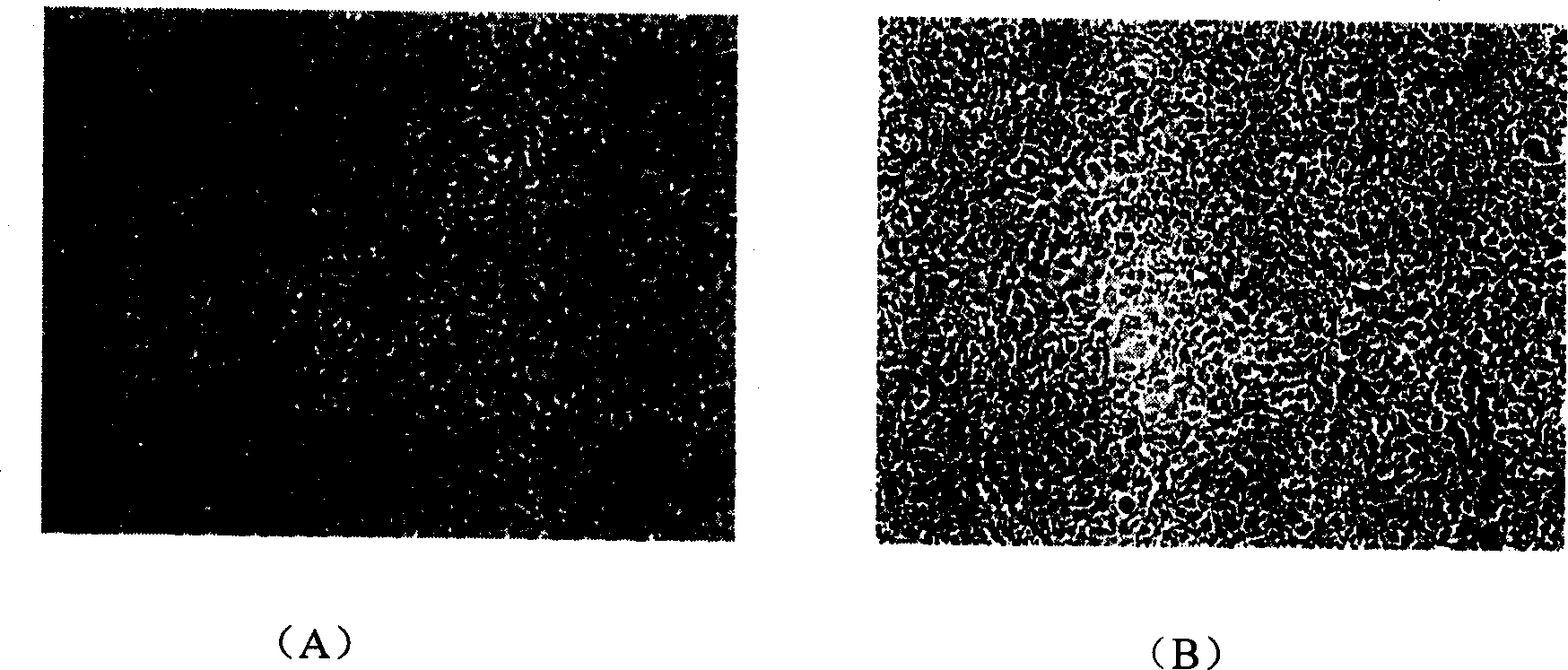Lefteye flounder lymph tumour virus toxic strain, its preparation method and application
A technique for lymphocyst virus and flounder, which is applied to the flounder lymphocyst virus strain and the fields of preparation and application thereof, can solve the problems such as the flounder lymphocyst virus has not yet been established, the time required is long, the in vitro culture is difficult, and the like. The effect of manual adjustment and control, reduced detection cost, and easy experimental conditions
- Summary
- Abstract
- Description
- Claims
- Application Information
AI Technical Summary
Problems solved by technology
Method used
Image
Examples
Embodiment Construction
[0029] All utensils, media, and reagents used for cell culture and virus amplification are required to be sterilized by autoclaving or filter sterilization in advance to keep them sterile. The preparation methods of some commonly used reagents are as follows:
[0030] Phosphate buffered saline (PBS, Ca-free ++ , Mg ++ ):
[0031] NaCl 8.00g
[0032] KCl0.20g
[0033] Na 2 HPO 4 2.31g
[0034] K H 2 PO 4 0.31g
[0035] Dissolve in 500ml of double distilled water, add 5ml of 0.4% phenol red solution, stir evenly, add double distilled water to 1000ml. 10 lbs sterilized for 15 minutes for use.
[0036] Double Antibody (Penicillin, Streptomycin) Solution
[0037] will be 10 6 Unit Penicillin G and 10 6 μg streptomycin was dissolved in 100ml sterilized three-distilled water to make 10 per ml penicillin 4 unit, streptomycin 10 4 μg.
[0038] TC119 Medium
[0039] Add the purchased TC199 medium powder according to the amount required in the instr...
PUM
 Login to View More
Login to View More Abstract
Description
Claims
Application Information
 Login to View More
Login to View More - R&D
- Intellectual Property
- Life Sciences
- Materials
- Tech Scout
- Unparalleled Data Quality
- Higher Quality Content
- 60% Fewer Hallucinations
Browse by: Latest US Patents, China's latest patents, Technical Efficacy Thesaurus, Application Domain, Technology Topic, Popular Technical Reports.
© 2025 PatSnap. All rights reserved.Legal|Privacy policy|Modern Slavery Act Transparency Statement|Sitemap|About US| Contact US: help@patsnap.com



